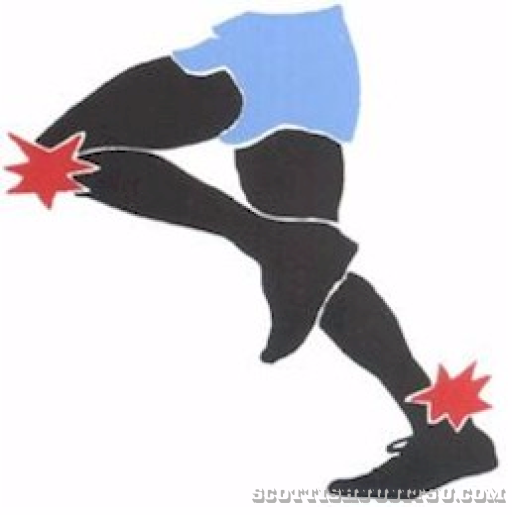Exercise on the Safe Side
The general purpose of exercising is to improve specific components of your fitness. Exercise will improve heart and lung function, tone and strengthen muscles, reduce body fat and maintain spine and joint mobility. Whether you are an athlete, or a person exercising for health and fitness, the principles and philosophy are the same. Start SLOWLY, increase the intensity GRADUALLY, ensure there is a SPECIFIC reason for each exercise, workout REGULARLY (every second day) and ensure your programme is designed for QUALITY rather than quantity.
SCREENING
Prior to commencing any exercise programme, it is important to identify any medical or physical conditions that may be aggravated by exercise. For the majority of people, physical activity should not pose any problems, however it is recommended that you discuss any medical issues with your physician. In particular, pregnancy and osteoporosis generate many questions in relation to exercise. Even though everybody is different, awareness of the following information could prove valuable.
PREGNANCY
As the pregnancy advances, the lower back has a predisposition to arch quite significantly. Development of your abdominal muscles early in pregnancy will help counteract the strain on the vertebral column later in pregnancy.
Overstretching is also strongly advised against during pregnancy as the body releases the hormone relaxin to calm the body's ligaments hence creating high susceptibility to sprains and strains.
lying on your back if you have reached your 4th month of pregnancy, as the foetus may obstruct the blood flow to the heart. Blockage of blood flow to the foetus may also occur. In addition be aware that: exercise may cause spontaneous abortion in the first three months of pregnancy; pregnant women may also suffer from overheating and lower blood sugar levels than they normally would; and lastly consult qualified obstetric personnel before commencing your exercise programme.
OSTEOPOROSIS
Evident in approximately 30% of post menopausal women, osteoporosis is characterised by a decrease in bone mass and 'brittle' bones more susceptible to fractures. Bone loss can occur in the vertebral bodies and may lead to spinal nerve compression, possible bone fracture and the development of postural problems. The exact cause of osteoporosis is largely unknown, however research indicates that smoking, lack of calcium in diet, inactivity, extreme thinness and oestrogen deficiencies are all contributing factors.
Exercise is vital to keeping bones strong, particularly walking but one must avoid rough terrain where sprains or accidents may occur. Finally consult your doctor and dietician for hormonal and dietary advice.
INJURY PREVENTION
An important factor of injury prevention involves being aware of any structural abnormalities. Again, these do not preclude you from exercising but may require certain modifications. Conditions such as bowed legs, knocked knees or uneven leg lengths may lead to injury over time especially with high impact activities. For example, many women who have a wide pelvis and knocked knees experience excessive rubbing and subsequent pain under the knee cap otherwise known as chondromalacia. Those with a tendency to excessively pronate (roll in at the ankle) or supinate (roll out) when running, skipping or race walking increase their risk of injury e.g. shin soreness. Weight supported or low impact activity is best. A qualified physical therapist can design a successful corrective programme for those with acute abnormalities. Alternatively, altering the cushioning of your shoes with custom-made orthotics may correct the problem
OTHER ISSUES
Shin splints - Nagging pains down the front of the shins - where muscle expansion during exercise is restricted by the muscle covering (sheath) and inflammation of the fibrous membrane covering the surface of the bone. Shin splints are common in high impact programmes.
Prevention - Avoid excessive toe bouncing and wear a well cushioned shoe. Complete rest and proper medical attention are the only solutions to those already suffering this ailment.
Stress incontinence - The first sign of stress incontinence is a small leakage of urine when coughing, laughing, lifting heavy objects or bouncing up and down during exercise. It may be caused by a defect or weakness in the urethral sphincter (bladder exit) or by a weak pelvic floor, which is unable to counter the inside abdominal pressure, built up during repetitious bouncy exercise.
Prevention - Five pelvic floor contractions, ten times per day, may assist in clearing this problem. These exercises can be done at any time of the day. Physiotherapists with a special interest in obstetrics will gladly help you learn pelvic floor contractions.
Insomnia - Insomnia is most prevalent in novices who exercise too vigorously, particularly close to bedtime. It is not advisable to exercise within two hours of going to bed. It takes approximately two hours for the physiological and neurological stimulation of exercise to subside - in some cases such as newcomers to exercise this process may take a little longer. The good news is that people who exercise regularly tend to sleep more soundly than the unfit.

